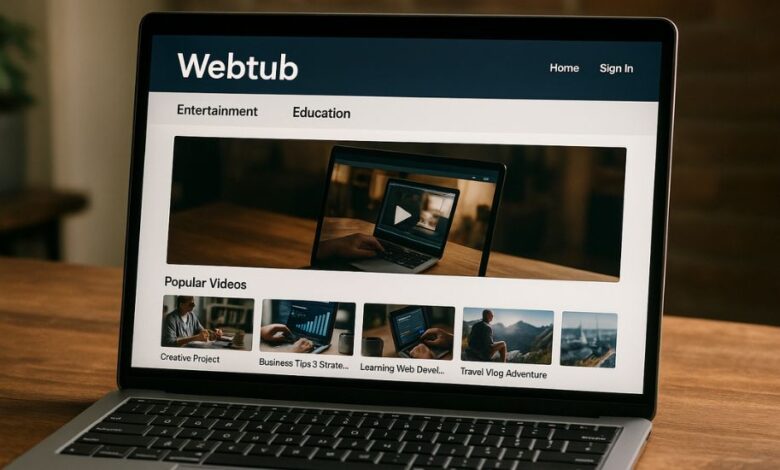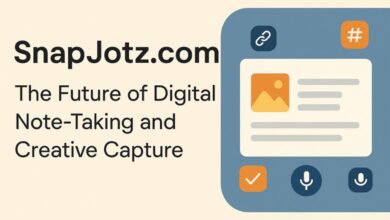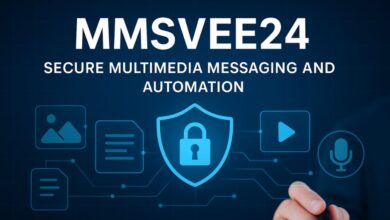Webtub: A New Era of Online Streaming & Creation

In a digital era defined by rapid innovation, saturated platforms, and content overload, it’s rare for a new name to break through the noise. Yet over the past year, Webtub has quietly been gathering attention across tech blogs, digital-marketing hubs, and entertainment circles. The name pops up in discussions about next-gen streaming, creator empowerment, online learning, community-driven platforms, and even business growth tools. At first glance, the platform looks like yet another entry in the endless lineup of video-sharing portals. But look closer, and Webtub is actually positioning itself as something far more ambitious.
Rather than focusing on one niche—like short-form videos, tutorials, business funnels, or streaming entertainment—Webtub tries to merge all of these worlds into a single, streamlined digital ecosystem. It markets itself as a place where creators, learners, and brands can interact without the fragmentation that’s typical of modern online experiences.
Today’s internet feels split across dozens of platforms: you post short videos on one platform, upload long content on another, host a course elsewhere, run analytics in a dashboard, publish articles on a CMS, manage clients through another system, and engage with your audience on entirely separate apps. This juggling act is tiring—and expensive.
Webtub’s core vision challenges that model. Its purpose is simple on the surface yet bold in execution: to be an all-in-one platform where video streaming, community engagement, business tools, and creator monetization live side-by-side in one place.
And users are paying attention.
What Exactly Is Webtub?
Think of Webtub as a hybrid digital platform that blends the functionality of:
-
A video streaming platform
-
A creator hub
-
A social community
-
A business and marketing toolkit
-
An educational content library
Instead of competing solely with YouTube, Netflix, TikTok, or Vimeo, Webtub dips into multiple categories. It aims to give:
-
Viewers → entertainment, knowledge, and interactive content
-
Creators → tools to publish, monetize, and build audiences
-
Businesses → analytics, marketing features, customer engagement, and professional visibility
At its core, Webtub wants to reduce the friction of using five different platforms for tasks that could all exist in one place.
This flexibility is likely a big reason tech blogs call Webtub a “modern digital experience” rather than simply another streaming site.
Why Webtub Is Gaining Traction: The Bigger Digital Context
The timing of Webtub’s rise is no accident. Several major digital trends have paved the way for platforms like this to succeed.
1. Creator Fatigue on Mega Platforms
Large platforms like YouTube and TikTok have millions of creators chasing visibility, making it increasingly difficult for smaller creators to grow. Algorithms favor viral trends, not steady quality.
Webtub, according to many blogs, promises fairer discoverability, creating space for niche creators to thrive without being overshadowed.
2. Demand for Hybrid Platforms
Users don’t want a hundred apps—they want fewer, more versatile ones. Webtub’s “everything in one place” strategy aligns perfectly with this shift.
3. Rise of Community-Driven Content
People no longer want passive watching. They want:
-
interaction
-
comments
-
collaboration
-
shared experiences
Webtub seems built to encourage communication and community bonding.
4. The E-Learning Boom
Online learning platforms have exploded. With growing demand for tutorials, courses, and educational videos, Webtub’s dual entertainment-and-learning model hits the right note.
5. Businesses Moving Toward Integrated Digital Strategies
Brands now need:
-
video marketing
-
analytics
-
audience insights
-
content hubs
Webtub offering all these tools in one place gives it a competitive edge among startups and small businesses.
A Deep Dive Into Webtub’s Key Features
While Webtub is still growing, several core features consistently stand out across blogs and reviews.
1. Modern, User-Friendly Interface
Webtub has prioritized simplicity. Early user reviews highlight:
-
Clean layouts
-
Easy navigation
-
Clear content categorization
-
A minimal, clutter-free experience
Unlike dense, ad-heavy platforms, Webtub tries to offer an environment where focus stays on content—not unnecessary distractions.
2. Powerful Content Categories
Webtub structures its library across multiple content types:
-
Entertainment videos
-
Tech/DIY tutorials
-
Business explainers
-
Reviews and educational clips
-
Creative media
-
Lifestyle and professional insights
This blend appeals to both casual viewers and serious learners.
3. Creator-centric Tools
Creators are at the heart of Webtub’s long-term vision. Some highlighted tools include:
-
Easy video publishing
-
Profile customization
-
Analytics dashboards
-
Audience engagement features
-
Visibility enhancements for new creators
-
Monetization routes (still in development)
The emphasis is on stability and fairness—two things creators often feel are missing on legacy platforms.
4. Community Interaction
Webtub is built around deeper audience engagement. Features include:
-
Comments
-
Discussions
-
Likes & reactions
-
Creator-follower interactions
-
Collaborative options for future updates
This makes the platform feel more like a community ecosystem rather than a passive streaming app.
5. Business and Marketing Tools
One of Webtub’s biggest surprises is how much it focuses on helping businesses grow.
Highlighted capabilities include:
-
Real-time audience analytics
-
Customer engagement insights
-
Marketing integration
-
Brand promotion tools
-
E-commerce connectivity
-
Professional presentation layers
This positions Webtub as a legitimate resource for digital entrepreneurs and small businesses wanting an online presence without relying on multiple apps.
How Webtub Stacks Up Against Other Platforms
To understand Webtub’s potential, you have to compare it to the giants it shares space with.
Webtub vs YouTube
YouTube strengths: scale, monetization, global reach
YouTube weaknesses: heavy competition, algorithm anxiety
Webtub advantages:
-
Friendlier visibility for small creators
-
Community-driven design
-
Hybrid content model (education + business + entertainment)
Webtub vs TikTok
TikTok strengths: short-form virality, trends
TikTok weaknesses: low educational depth, limited creator control
Webtub advantages:
-
Longer content formats
-
More meaningful engagement
-
Tools for professional creators
Webtub vs Netflix / Prime Video
These platforms offer premium entertainment but lack:
-
user-generated content
-
creator opportunities
-
free educational resources
Webtub merges entertainment & creator-focused content—something traditional streaming platforms don’t do.
Webtub vs Business & Marketing Tools
Webtub offers features similar to:
-
analytics dashboards
-
marketing platforms
-
community hubs
But by combining them with a content ecosystem, it becomes far more versatile.
Who Webtub Is Perfect For
1. Content Creators
If you’re starting out or looking for fair visibility, Webtub offers a more level playing field.
2. Students & Lifelong Learners
Educational content is one of its strongest categories.
3. Small Businesses & Startups
With built-in analytics and promotion tools, brands can use Webtub as part of their digital strategy.
4. Casual Viewers
From entertainment videos to fun tutorials, the platform has plenty of relaxed, everyday content too.
Advantages of Webtub
Here are the biggest strengths highlighted consistently by blogs:
-
Easy to use
-
Accessible to all levels of creators
-
Cost-effective (fewer tools needed)
-
Scalable for individuals or businesses
-
Encourages deeper user engagement
-
Offers diverse content formats
-
Saves time by centralizing multiple functions
Current Limitations & Future Opportunities
No platform is perfect, especially new ones. Some challenges include:
1. Limited User Base Compared to Giants
Webtub is still young. It needs more creators and viewers to compete at scale.
2. Monetization Model Still Evolving
Creators want clarity on:
-
revenue split
-
ads
-
premium features
-
sponsorship options
These details will shape the platform’s future.
3. Branding Confusion
Because “Webtub” appears in different contexts online—like educational sites or blogs—new users may be unsure which platform is which.
4. Competition Across Multiple Fronts
Webtub isn’t competing with one industry—it’s competing with five.
But that’s also its unique opportunity.
If executed well, Webtub could become the universal digital hub modern creators and businesses have been waiting for.
Why Webtub Might Be the Future of Digital Platforms
Webtub arrives at a moment when everything is shifting:
-
creators want more control
-
businesses want integrated solutions
-
viewers want richer experiences
-
learners want accessible education
By merging all these needs into one digital environment, Webtub feels like a reflection of what modern users actually want, not what outdated platforms assume they want.
Its success will depend on how fast it evolves, how well it listens to its user community, and how sharply it differentiates itself.
But the concept is strong, the timing is perfect, and the potential is huge.
Conclusion
Webtub is more than just another streaming or content platform—it’s a comprehensive digital ecosystem blending entertainment, education, community, creator tools, and business functionality. With its all-in-one structure, creator-friendly philosophy, and focus on real audience engagement, it stands out in a crowded market.
While it still has challenges to overcome—especially scaling and clarifying revenue systems—the foundation is promising. If Webtub continues growing at this pace, it could become one of the most influential digital platforms of the next decade.
This article was proudly crafted for Blog Loom, where we explore emerging tools, platforms, innovations, and the future of online experiences.
You may also visit: Crackstream 2.0: Free Sports Streams & Reddit Links




